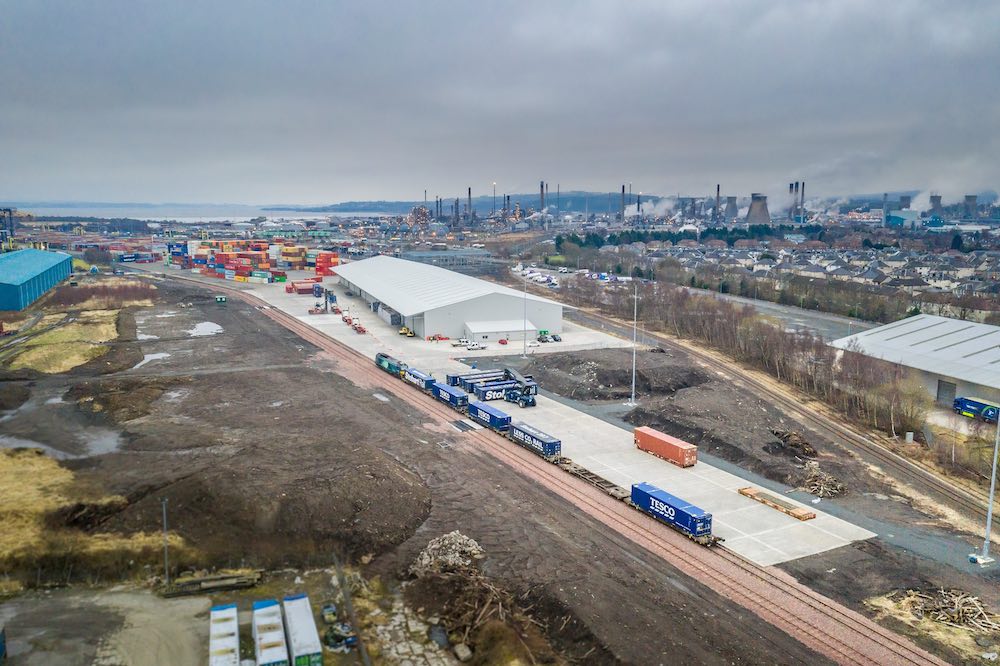 Charles Hammond OBE CEO, Forth Ports
Charles Hammond OBE CEO, Forth Ports

For centuries, trade has been a potential source of economic wellbeing and prosperity, and while our industry is clear evidence of that, the Green Freeports initiative presents us with the power – and the opportunity – to spread that wealth and prosperity into the communities which surround our trading ports.
The prime areas of focus of Green Freeports must be our investment in green technology, modern manufacturing, infrastructure and skills, and these lie at the heart of Forth Ports’ visionary Green Freeport bid, one that I’m confident can create 50,000 new, high quality, green jobs. To help ensure that these opportunities reach people who are furthest from the jobs market, we are proposing that we, and our bid partners, invest in a unique skills accelerator and virtual reality educational offering, based initially at the Port of Grangemouth – Scotland’s largest port (pictured above).
This is about re-industrialising not just the Forth Estuary, where our host ports of Grangemouth, Leith, Rosyth and Burntisland are located, but the whole of Scotland’s Central Belt. These jobs will be created in Glasgow and Edinburgh, Falkirk and Stirling, Edinburgh and the Lothians, and Fife. As port operators and owners, we have always invested, with our supportive shareholders, in infrastructure which is vital to the future of Scotland.
The new renewables berth and hub complex at Leith is the most recent evidence of this and we are already committed to pump priming our Green Freeports bid with a £50 million investment in what will be Scotland’s largest renewables hub in an area of deprivation allowing us to give apprentices hope for the future while enabling the first important steps towards a necessary green transition.
Our vision for Leith is to create a renewables centre of excellence for R&D, manufacturing and assembly that matches anything in northern Europe, and with genuine export potential. The tax incentives that accompany a Green Freeport are not for the port owners themselves, they’re designed to attract the inward investors, the innovators and the change-makers to locate there, creating more jobs and economic development that benefits the whole country.
While they’re called Green Freeports, it’s not just about ports. We’ve partnered with INEOS – the owners of the UK’s largest petrochemicals plant at Grangemouth; Edinburgh Airport – Scotland’s largest airport; Babcock – our neighbours at Rosyth; Scarborough Muir – also big landowners at Rosyth; and of course Falkirk, the City of Edinburgh and Fife councils – all of whom have a major role to play in Scotland achieving its net zero ambitions.
By working together, we can truly be a force for good. And it is Scotland’s road to net zero that must lie at the heart of any successful Green Freeports bid. It needs to attract £billions of investment in renewables technology from within and outside the UK which can power that transition to net zero. Investment not just in the offshore wind farms themselves but in the manufacturing capability that will enable Scotland to firstly support our own transition to net zero then to export this expertise all over the world while, at the same time, creating a domestic supply chain that supports this and creates yet more high-quality jobs further down the supply chain and in supporting sectors.
Meanwhile, the Green Freeports initiative must provide the incentives for other carbon reduction technologies – such as carbon capture and blue, then green, hydrogen production. The Firth of Forth is Scotland’s biggest trading and industrial asset, and presents a unique opportunity for inward investment and carbon reduction. The Green Freeport gives it a platform to reduce emissions while creating technology and jobs for the future. Scotland is rich in assets, skills and potential and now is the time to turn that potential into reality in a just, fair and inclusive way.